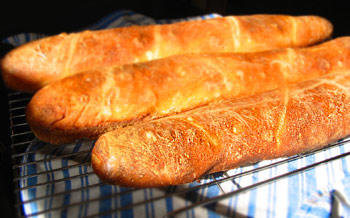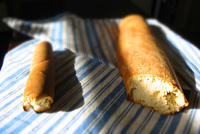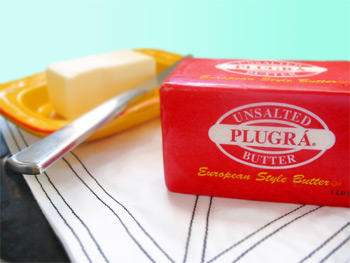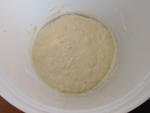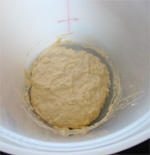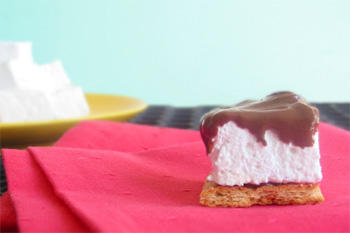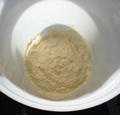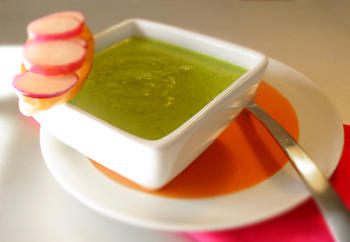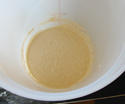 It’s starting to get cool outside, the days are growing shorter, and leaves are beginning to collect in the gutter. Fall is quickly coming, and with the change of season, comes my strong nesting instinct. Days are spent thinking of all of the soup recipes I will try, and what new and exciting dishes filled with cabbage there are to explore; and my weekends are spent stock piling dumplings in the freezer. I love a good dumpling, so much so, I even tolerate a not-so-good dumpling on occasion. It’s all very zen. And in what ways is a bourgie zen? By stuffing, folding, and storing too many dumplings to count.
It’s starting to get cool outside, the days are growing shorter, and leaves are beginning to collect in the gutter. Fall is quickly coming, and with the change of season, comes my strong nesting instinct. Days are spent thinking of all of the soup recipes I will try, and what new and exciting dishes filled with cabbage there are to explore; and my weekends are spent stock piling dumplings in the freezer. I love a good dumpling, so much so, I even tolerate a not-so-good dumpling on occasion. It’s all very zen. And in what ways is a bourgie zen? By stuffing, folding, and storing too many dumplings to count.
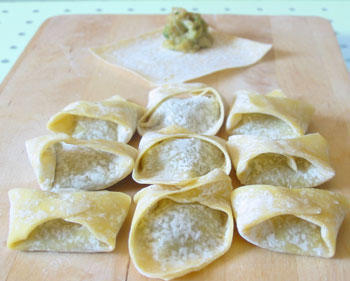 This task may seem daunting to some, but there is something gratifying about folding a little package almost from scratch, and something liberating about choosing and perfecting the fillings. The batch of dumplings I made definitely had an Asian bent– minced chicken, crisp savoy cabbage, and scallions, all seasoned with soapy cilantro, spicy ginger, and a dose of toasted sesame oil and soy sauce. But let the filling be to your liking: shrimp, pork, tempeh, or purely vegetable. How bad can anything be when it is bite-size, and wrapped in dough?
This task may seem daunting to some, but there is something gratifying about folding a little package almost from scratch, and something liberating about choosing and perfecting the fillings. The batch of dumplings I made definitely had an Asian bent– minced chicken, crisp savoy cabbage, and scallions, all seasoned with soapy cilantro, spicy ginger, and a dose of toasted sesame oil and soy sauce. But let the filling be to your liking: shrimp, pork, tempeh, or purely vegetable. How bad can anything be when it is bite-size, and wrapped in dough?
Then comes the zen, the zone when your fingers just go through the motions of making fold after fold of neat little packages. I put on a CD (Chelsea Girls by Nico, letting the drone of Nico’s voice be the soundtrack to making the decided folds in the dough). Just when it seems that I have been on my feet too long, the kitchen counter covered in a light dusting of corn starch from the wonton wrapper, I look over to my side and see the orderly piles of dumplings, and smile, knowing it was all worth it.
And let the freezing begin! Artfully arranged in freezer bags, the dumplings are good for a few months, but they never really last that long at my house. When you have a bag of homemade dumplings awaiting you, my fellow bourgies, you will no doubt find something delicious to do with them. Steamed, pan fried, or used in soup, homemade dumplings can quickly become part of anyone’s culinary repertoire. So let’s all chant the mantra together: “dumplings, dumplings, dumplings!”


 Chow is a new, bi-monthly food magazine that is all about food as enjoyment. It demystifies food, making it accessible to even the most green of all food novices. Heavy on the “journalistic” aspect of food writing, it is filled with facts, and little-known details about the foods we eat everyday. But most exciting (for me anyway), is the latest issue contains an article about Snack Cakes for the 21st Century, with four all-new recipes for those little bits of goodness, minus the cellophane wrappers from our childhood, by me. That’s right the girl who professes to not enjoying baking, bit the bullet, tied on an apron, and got down and dirty with a pastry bag, all in the name of a little bit of food journalism. And I have to admit, I rather liked it.
Chow is a new, bi-monthly food magazine that is all about food as enjoyment. It demystifies food, making it accessible to even the most green of all food novices. Heavy on the “journalistic” aspect of food writing, it is filled with facts, and little-known details about the foods we eat everyday. But most exciting (for me anyway), is the latest issue contains an article about Snack Cakes for the 21st Century, with four all-new recipes for those little bits of goodness, minus the cellophane wrappers from our childhood, by me. That’s right the girl who professes to not enjoying baking, bit the bullet, tied on an apron, and got down and dirty with a pastry bag, all in the name of a little bit of food journalism. And I have to admit, I rather liked it.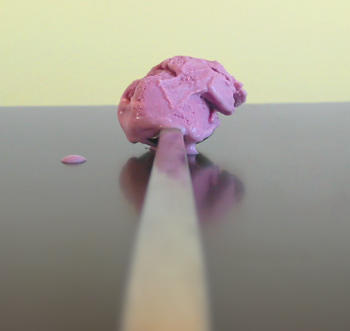
 They are here! After two weeks I finally have sourdough bread, and it is edible. In fact, it’s more than edible, it’s delicious– crisp, with a good crumb, and an even better crust. But it was not an easy road, filled with failed attempts, flour flying, and several unleavened– well, breadsticks.
They are here! After two weeks I finally have sourdough bread, and it is edible. In fact, it’s more than edible, it’s delicious– crisp, with a good crumb, and an even better crust. But it was not an easy road, filled with failed attempts, flour flying, and several unleavened– well, breadsticks.